MIT develops technology to digitally program water droplets
Researchers from MIT are developing a technology that transforms water droplets into programmable, interactive tools for entertainment and communication.
The new Programmable Droplets technology is designed to enable users to digitally program water droplets, taken from our everyday environment, and manipulate them via a computer interface.
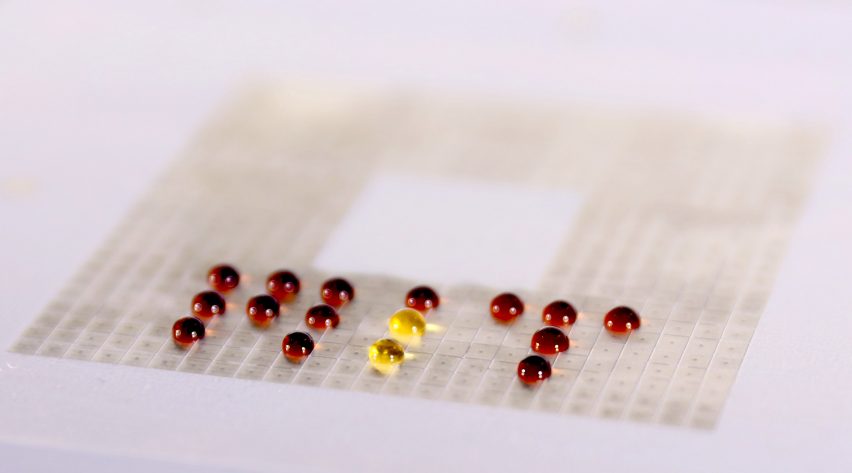
The project is being led by researcher Udayan Umapathi and professor Hiroshi Ishii from the university's Tangible Media Group.
They hope the new technology will demonstrate the potential for water as an interactive medium for creativity, art, entertainment and communication, to better connect people to their physical environment.
"If you think about it, as we walk in rain, wash our hands or even work in laboratories, we are constantly interacting with water," said Umapathi.
"So we started asking the question, if this beautiful and inspiring material which is ever-present could give us a 'calm' computer interface. To show that this is possible, we have created the Programmable Droplets system for interaction."
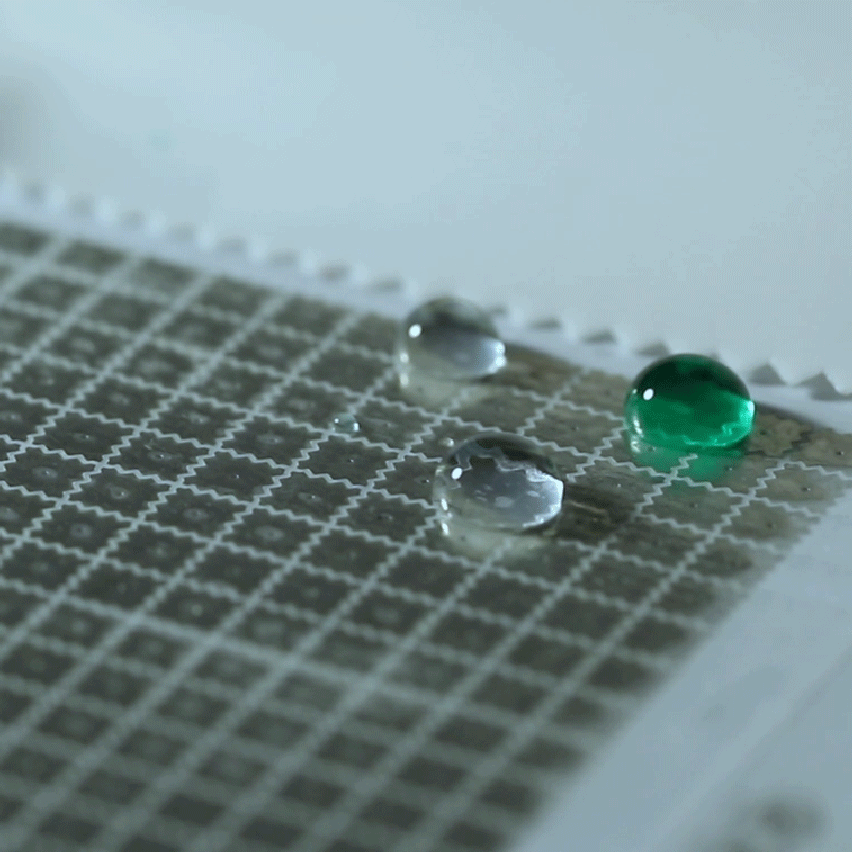
The system utilises the "electrowetting" technique, which involves applying a voltage to a droplet of water to make it change shape.
According to Umapathi, this technique can be traced back to experiments from the 19th century. "We are repurposing this classical physical mechanism of controlling water's behaviour," he said.
On a basic level, the system comprises a printed circuit board that has been coated with a low-friction material, and covered with a grid of copper wiring.
"By programmatically controlling the electric field of the grid, we are able to change the shape of polarisable liquid droplets and move them around the surface," explained Umapathi.
This precise control allows the user to perform operations such as translating, morphing, merging, and splitting multiple droplets simultaneously.
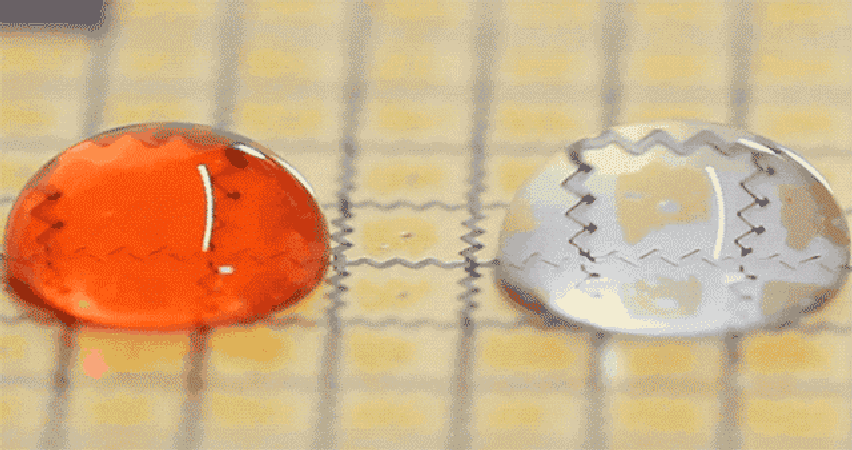
One potential use for the programmable droplets is for painting. The research team integrated the device into a physical colour palette to automatically render and mix colours together.
In this scenario, the droplets exist as a "pool", already coloured in cyan, magenta and yellow (CMY). These colours can be automatically diluted with colourless droplets to create different gradients.
A user can also take a picture of an object using their smartphone, and extract a specific colour from that image that they want to paint with – a functionality similar to the eyedropper tool on Photoshop.
The program then registers the quantities of the three CMY colours that need to be combined to create the desired hue, and automatically mixes them together by programming the droplets to move in a "to and fro" motion.
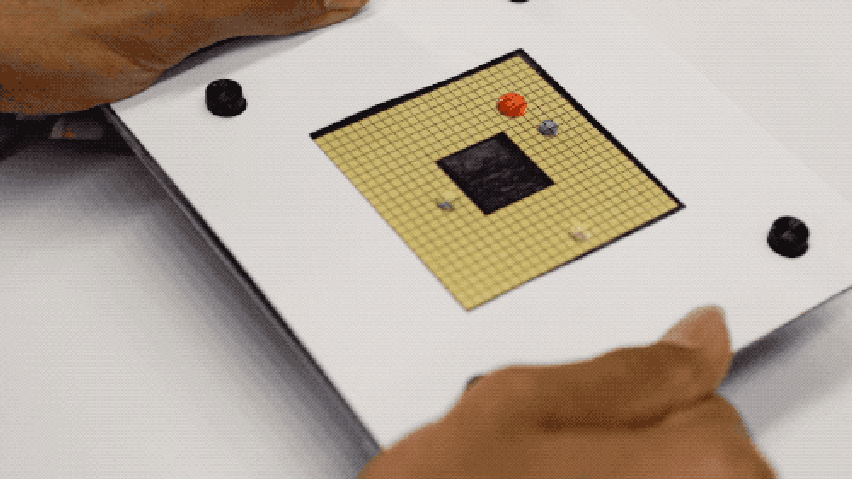
The technology could also be used as a hand-held gaming console, which could help to develop the familiarity of a person's understanding of the physical world by using gravity to steer water.
The main droplet, or "character", is steered by the user tilting the board, and the opponents' motions are controlled by a computer.
The aim of the game is for the primary character to engulf the others – something the team refer to as a "physical version of Pacman". The system senses when the user-controlled droplet gets closer to its opponents, and drives the other characters away.
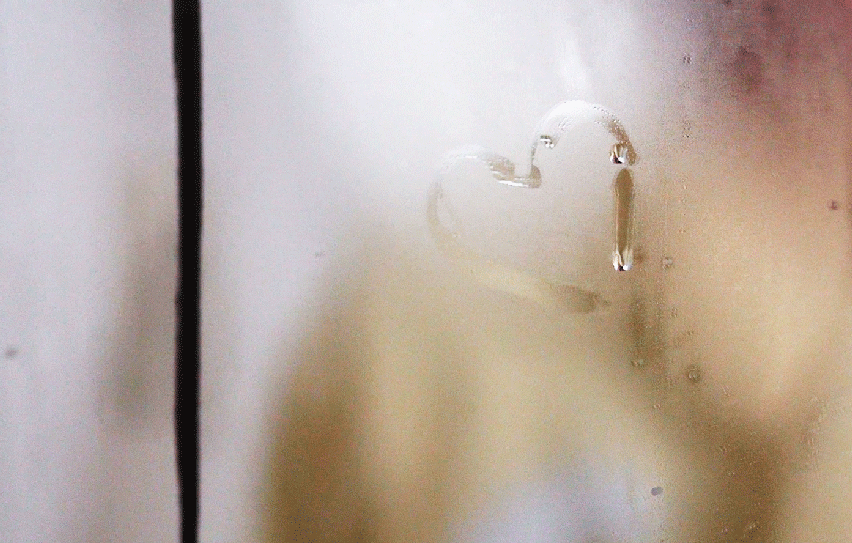
Another potential use, still currently a conceptual idea, would see the programmed droplets used as a communicative medium.
Droplets would be digitally programmed to physically render messages written on smartphones on surfaces, like a steamed up mirror, by regulating the shape and motion of the droplets in the condensation.
"Programmable Droplets establishes a new paradigm in the field of programmable materials," Umapathi told Dezeen. "As we begin to embark on the ability to program the physical world around us, just the way one programs information in bits, we want to imagine interfaces and human interactions enabled by such ability."
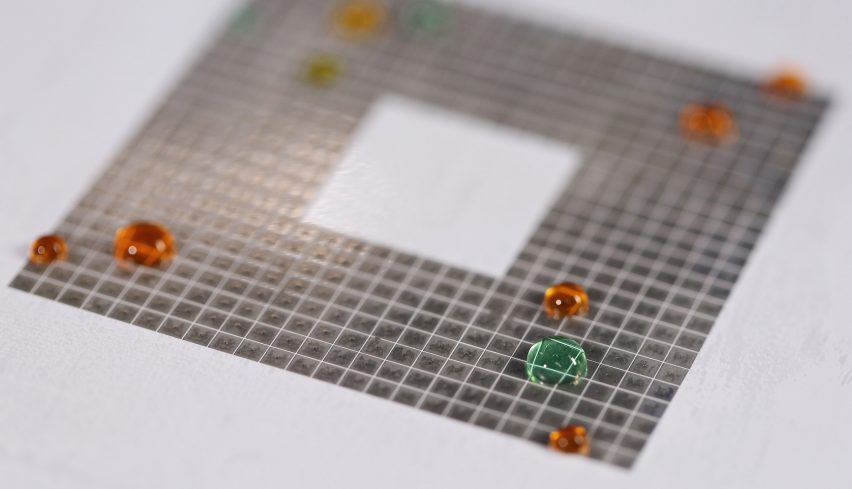
"In the future, we think that our system can be more seamlessly integrated into our living space to enable various interactions. We believe Programmable Droplets is a good first step in this direction," he continued.
"Trapping ambient water droplets adds a new dimension to common everyday objects like windows, cups, lids, and umbrellas. The rain droplets on a window, which we all romanticise with, will not be the same with interactive Programmable Droplets."
Other recent projects have seen MIT researchers develop a wearable gadget that transcribes and responds to conversations users have with themselves in their heads, and a technology that turns plants into functional lighting by introducing specialised nanoparticles into leaves.